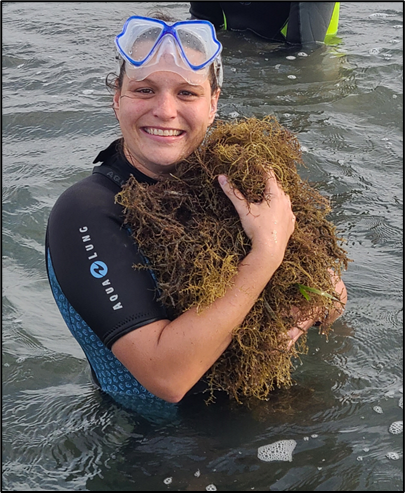(October 25, 2022) --

A new publication highlighting DISL research in the Gulf of Mexico appears in the Journal of Experimental Marine Biology and Ecology today (October 25, 2022). Recent DISL Ph.D. student Kelly Correia worked with DISL Senior Marine Scientist Dr. Lee Smee to understand the impacts of drift macroalgae on seagrass habitats.
Drift macroalgae is the guck you spot on your fishing lines and hooks when fishing in seagrass meadows. Correia and Smee investigated how current levels of these algae in the Gulf of Mexico affect seagrasses and the animals that live there. They measured the changes in temperature, dissolved oxygen, and flow in Redfish Bay, Texas, and Big Lagoon, Florida. These coastal ecosystems demonstrated the difference in drift microalgae compositions.
In both locations, their research concluded that the drift macroalgae can increase the habitat value of seagrasses by providing extra space to hide from predators and extra food sources. This can be a benefit to areas where seagrasses have declined or died off. The algae provide some habitat value for animals.
Dive deeper into their research techniques and findings in the publication, Habitat suitability of drift macroalgae in two shallow coastal estuaries of the northern Gulf of Mexico.
Today, Correia works for the Texas Commission on Environmental Quality.